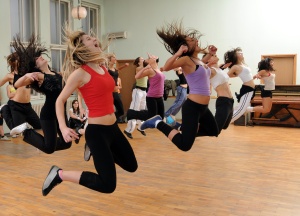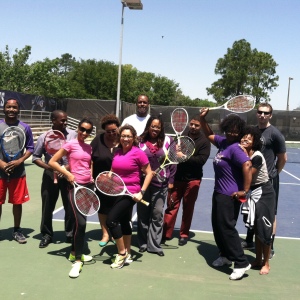What’s On Your Plate? (June Edition)
What choices are you making today that will influence the decisions of our students here on campus?
The rising obesity rates and the prevalence of harmful weight management strategies employed by college students, have peaked the curiosity of researchers. In fact, The American College Health Association (2005) in a national college health assessment gathered data which suggest that
stress is the number one reported health impediment to students’ academic performance, with depression and anxiety ranked number five. That same assessment revealed that over 15,000 of the 56,637 student’s surveyed were overweight or obese.
As high school students change over into the semi-independent lifestyle of college life they are faced with the added responsibility of making choices that could have a profound impact on their physical, mental, and nutritional health. Jackson, Tucker and Herman (2007) supports that college students are “challenged with greater autonomy, new demands and stressors associated with a different structure to daily life” (p. 69). It is believed that understanding the factors that encourages or discourages certain health practices of college students, and the individuals that have the greatest influences could reveal the key to student’s nutritional health behaviors.
Albert Bandura’s Social learning theory suggests that people learn indirectly, by observing and modeling others with whom they may identify with the most. According to Horacek, Betts, and Rutar (1996), “college students’ most used source for nutritional information is their family and peer group” (p. 353). Similarly, a study conducted by Greaney et al. (2009) of 115 college students suggests that there are interpersonal-level barriers to healthful weight management, indicating that other individuals behaviors are influential factors to ‘what and when’ college students eat (p. 283).
In addition, The Theory of Reasoned Action, developed by Fishbein and Ajzen, states that the intention of a person to adopt a recommended behavior is determined by the person’s subjective and normative viewpoint based on what others think he or she should do, and whether important individuals approve or disapprove the behavior. Budd, Beiker, & Spencer (1982) and Towler & Shepherd (1992) support this theory in their respective studies, which indicate that a person’s attitude and subjective norms are both predictors of individuals consumptions and/or use of unhealthy substances and/or foods.
Campus leadership is an important aspect of helping freshman students as they change over into a semi independent living situation; moving from the comforts of home to an environment where they must manage their lives without the direct input of family and/or caretakers. Leadership is also important in modeling health behaviors for students, especially on the college campus which could perpetuate overconsumption of unhealthy foods. This is due to the ease of accessibility to foods that are not enriched with nutritional benefits (Strong, Parks, Anderson, Winett & Davy, 2008). These health behaviors could be any action taken by a person to maintain, attain or regain good health and to prevent illness.
According to the Center for Disease Control (CDC), schools

By Danielle Y. Hairston Green,
Program Specialist, Family and Consumer Sciences
Cooperative Extension Program
Visit us online at www.pvamu.edu/cahs
Reference:
Greaney, M.L., Less, F.D., White, A.A., Dayton, S.F., Riebe, D., Blissmer, B., Shoff, S.,Walsh, J.R., & Greene, G.W. (2009). College Students’ barriers and enablers for healthful weight management: A qualitative study. Journal of Nutrition Education and Behavior, 41(4), 281-286.
Horacek, T.M., Betts, N.M., & Rutar, J. (1996). Peer nutrition education programs on college campuses. Society for Nutrition Education, (28)6, 353-357.
Jackson, E.S., Tucker, C.M. & Herman, K.C. (2007). Health value, perceived social support, and health self-efficacy as factors in a health-promoting lifestyle. Journal of American College Health, 56(1), 69-74. doi: 10.3200/JACH.56.1.69-74.
Strong, K.A., Parks, S.L., Anderson, E., Winett R., & Davy, B.M. (2008). Weight gain prevention: identifying theory-based targets for health behavior change in young adults. Journal of American Dietetic Association, 108, 1708-1715.
Towler, G. & Shepherd, R. (1992). Modification of Fishbein and Ajzen’s theory of reasoned action to predict chip consumption. Food Quality and Preference, 3, 37-45


